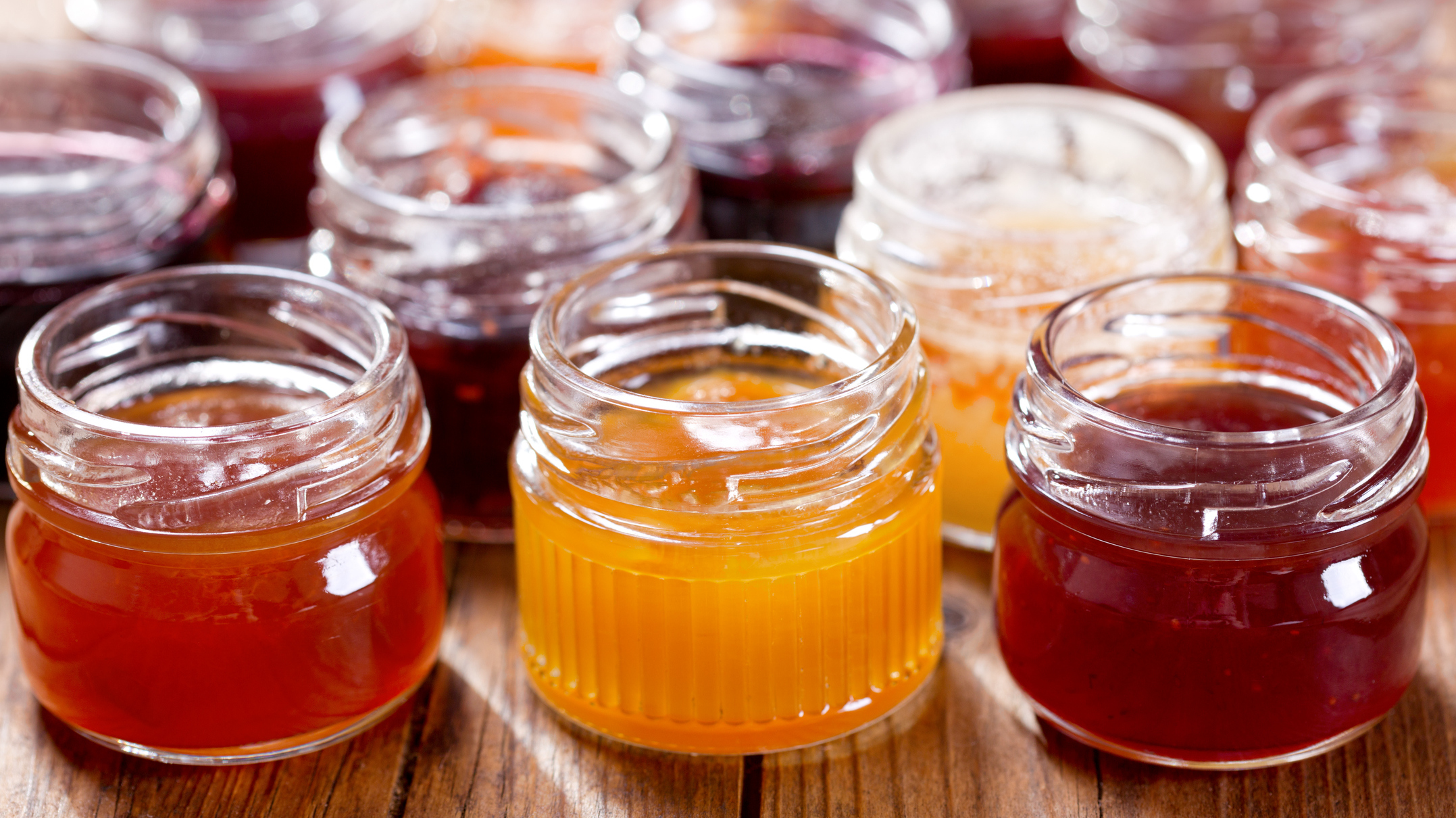What's The Difference Between Jams, Jellies, Marmalades, Preserves, And Compotes?
You may think you're a confident connoisseur, expertly navigating shelves of small-batch pickles, heirloom grains, and 204 types of yogurt. But then you get to the preserves section, with its walls of—sing it with me—jams, jellies, marmalades, preserves, conserves, compotes, fruit butters, fruit spreads, and chutneys. They're all spreadable and made from fruit, so why are there so many different words? I consulted two experts—author Marisa McClellan of Food In Jars, and the team from Ball Fresh Preserving Products by Newell Brands (you know, the canning-jar people)—to get some definitions down.
Preserve
An overarching term for any soft-set spread made with uniform pieces of fruit and sugar. (All jams are preserves, but not all preserves are jams.)
Jam
A preserve made by cooking crushed or chopped fruit with sugar until it gels (at 220 degrees Fahrenheit, eight degrees above the boiling point of water). Jams aren't totally smooth but aren't super-lumpy with whole fruit, either.
Jelly
A translucent preserve made with fruit juice. Because it uses juice, not bits of fruit, jelly is the smoothest, most uniform preserve. The FDA requires jellies to contain at least 65 percent sugar, and must be made with fruit juices or concentrates.
Fruit spread
Typically, if a product is made with less sugar than 65 percent, it will be labeled a fruit spread.
Fruit butter
Made from pureed fruit, as well as sugar and/or spices, fruit butter derives its body from natural fruit fiber rather than pectin.
Marmalade
A spreadable preserve made with citrus rind or peel, though variations made with chunks of other non-citrus fruit skins—like carrot marmalade—exist.
Conserve
A preserve to which a secondary herb, vegetable, or nut has been added—for example, a peach conserve with ginger and toasted walnuts.
Compote
A sweet-and-savory preserve made of pieces of fruit cooked down into a chunky syrup.
Okay, definitions aside, why would you use a jam versus a jelly, or a marmalade versus a conserve? Mostly it comes down to your preference on texture, spreadability, and how many fruit clumpies (technical term) you want in your preserve. Certain textures are better suited to spreading on a sandwich while others are better when spooned onto a dish of ice cream.
"If you want something that's going to stay on your PB&J, jam or jelly will be your best bet because compotes and conserves by their nature are going to be a little runnier," McClellan tells me. "But if you're looking for something to serve with cheese, then a preserve, chutney, or compote has more dollopability."
